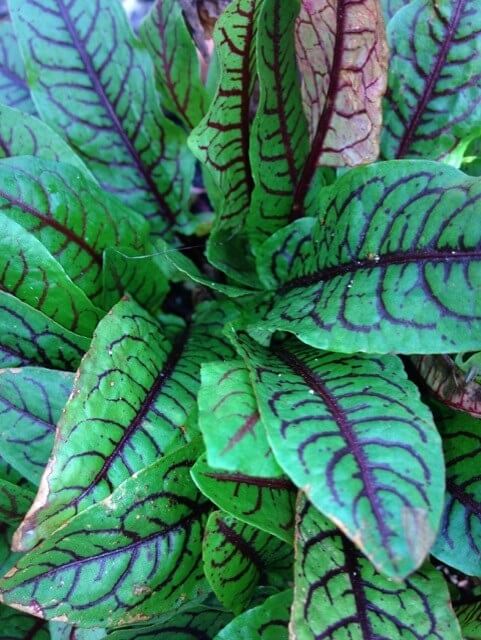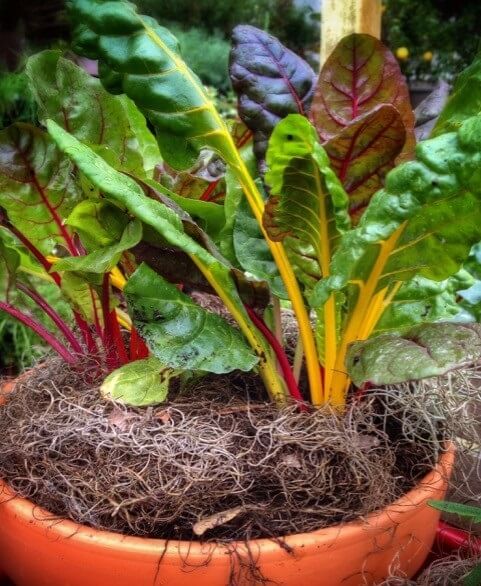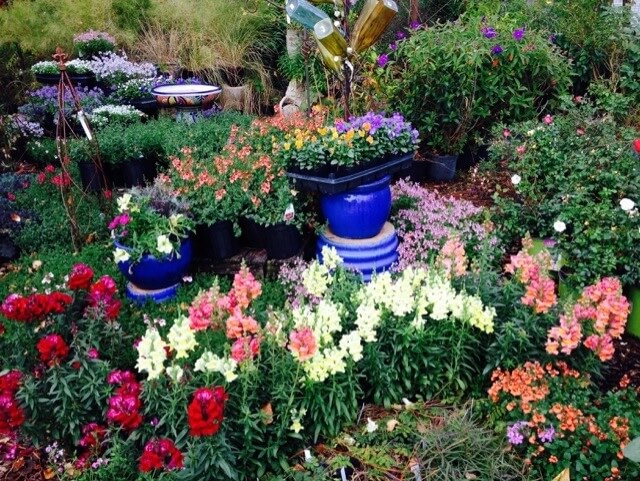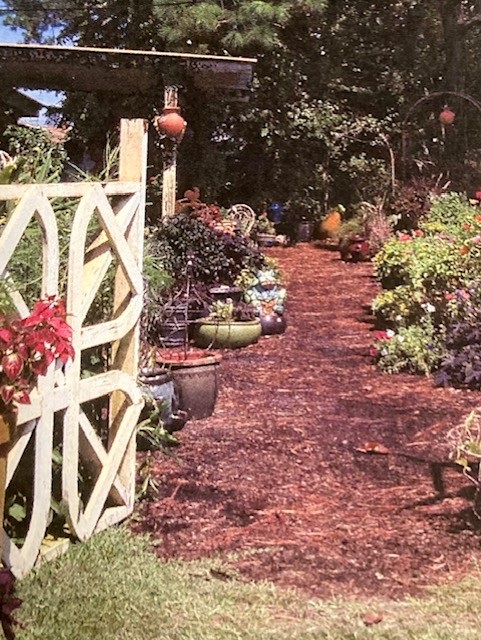Happy New Year! January always seems to be a time of reflection of the year gone by, and planning for the new year to come. A lot can be learned from this review and reflection — what would you change, what has worked in your garden, what would you add or subtract? Even the smallest of yards can become gardens: butterfly gardens, veggie gardens, herb gardens, cottage gardens, etc. Using ground space wisely and adding container gardens can bring interesting changes and focal points in every season. This is still a good time to plant trees and shrubs, winter herbs, and winter annuals and perennials.

Our winter gardens have lots of possibilities. There are many flowering plants that bloom here for winter color, and vegetables that produce leafy greens or root crops through the winter: collards and kale, turnips and carrots, radishes and beets, broccoli and brussels sprouts.
Most herbs thrive in the winter here. Many herbs are native to the arid Mediterranean area. They are fine with our warm temperatures, but suffer in our summer humidity. Thyme loves the winter here, and cilantro and dill only grow in our cooler months. (Basil is the exception. It will die at temperatures under 40 degrees, if not protected.)
Thank you to those who attended our presentation, “Winter Color for Your Garden”, for the Hoe & Hum Garden Club at the Gulf Breeze Senior Center on January 8th. Emily discussed winter blooming annuals and perennials, trees and shrubs that provide color and interest in the winter, grasses for foliage color and movement, and some vegetable plants that look as good as they taste! If you missed it, rest assured that more classes and presentations are in the works.



Speaking of winter, we are experiencing a freeze for the next several days. Some plants will need to be protected to survive. The night-time temperatures are expected to be in the high 20’s, but that will be variable through our area. Because The Garden Gate was located on Highway 98 in Tiger Point, we noticed that in every freeze, the flower beds that faced the highway had less freeze or frost damage than plants in the back area. The asphalt of the highway held the heat, which radiated to the front gardens.
Large bodies of water also affect the temperature and humidity. Usually the closer you live to the bays, the Sound, or the Gulf, the warmer the temperature, although the wind can drop the temperature quickly.
Soil temperature also makes a difference in a freeze — usually the soil temperature is high enough to withstand root damage for the first freeze, but the soil will eventually cool down for the season. Plants grown in containers don’t have the luxury of soil warmth for long, since they are above ground. Potted plants are the most apt to freeze, and usually need to be protected in any freeze.
In late 1984 and early 1985, this area experienced an extreme freeze. The temperature dropped to 8 degrees, and no amount of covering or heating was very effective. Many usually hardy plants were killed. The shallow bays and waterways were frozen close to shore. East Bay, where I lived at the time, is very shallow for many yards off the shore, and was frozen from the shore out to about 100’. All the close-to-shore sea creatures were also “frozen” — and hundreds of frozen mullet washed up on our beach. We had a couple of neighborhood “fish fries”, but we still had a lot of dead fish on our hands. I had a large veggie garden at the time, so I “planted” the mullet by digging holes with a post hole digger about every 18” in the garden. I must say for the next five years, I had the best garden ever! (The really good news is that most of the species that live in the shallow bay experienced a “suspended animation” during this freeze, but returned to life when the ice thawed.)
Here are some considerations as you prepare to protect your plants:
- Plants need to “breathe” so it is best to cover with a frost cloth or even old sheets to let the air circulate. If you cover with plastic, remove it as often as possible, when the temperatures are above freezing.
- Roots take up, process, and release water to keep the plant alive, so plants will still need to be watered if the freeze lasts several days.
- Plants need light. An extended freeze under a dark blanket or other cloth can kill a plant.
- Resist the urge to prune trees and shrubs, if the leaves die in a freeze. Pruning signals evergreen woody plants to put out new foliage as soon as it warms up. We have enough warm days in the winter to cause a tree or shrubs to re-leaf, but another freeze can kill new growth and damage the plants.
- If you have to bring plants into the house to protect them, it is sometimes hard to protect the surfaces beneath them. Pet Pee Pads (available at grocery stores) work great to prevent the moisture from plants doing damage.
I’m sure we will see changes of all kinds in the new year, but I plan to be in the garden as much as I can. That’s where I am the happiest, and feel at peace. With that in mind, one of our up-coming presentations this year will be on “Serenity Gardens”. No matter where you live and garden, there are so many ways to create a space that is peaceful and serene. (I have often thought of the people that would tell us how peaceful it was at The Garden Gate. Since we were right on Highway 98, it was obvious that the gardens were a place that was at least mentally separated from the noise and busyness of the highway.
The Serenity Garden presentation will discuss the elements that create the feeling of serenity. The amount of space is optional —even small spaces can be a retreat. Serenity gardens are sensory, to connect us with sights, sounds, fragrance, and textures that calm our overworked minds and hearts. Serenity gardens are paradoxical: they can give us solitude or connection; they are often enclosed but always draw us inside. Serenity gardens use natural materials to ground us — materials that we see every day but used in a metaphoric way. Water, earth and plants in a serenity garden are elements that can take on different meaning. The time and place for this presentation will be in our newsletter and/or on our website. Keep your eyes peeled!
Other classes planned for this year include a series of presentations on garden design. The first presentation will give general information for those interested in doing a design. The second opportunity will be a hands-on class for those of you that want to learn about design, by designing your own garden/landscape. We will furnish the supplies and the instruction on design principles, and guide you through the process. Working with basic pictures and information that you provide, you will get specific information and suggestions for your landscape. You will take home a design, a plant list (with size, quantity, and cost estimates), plus a step-by-step timeline with a list of materials needed and their cost. We welcome emails if you have questions or are interested in participating.


Leave a Reply to Catherine Cancel reply